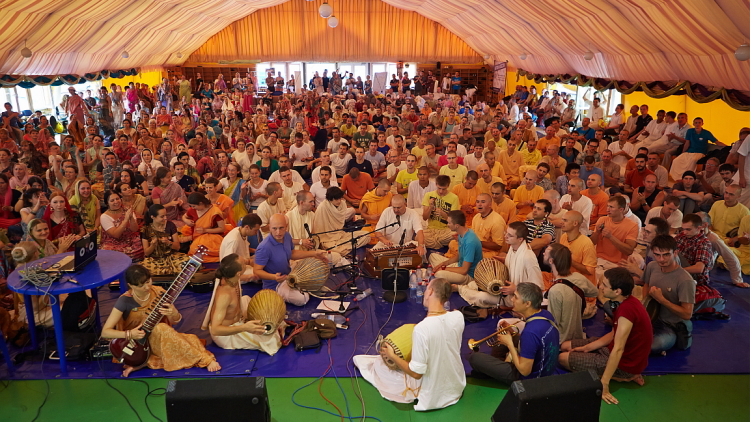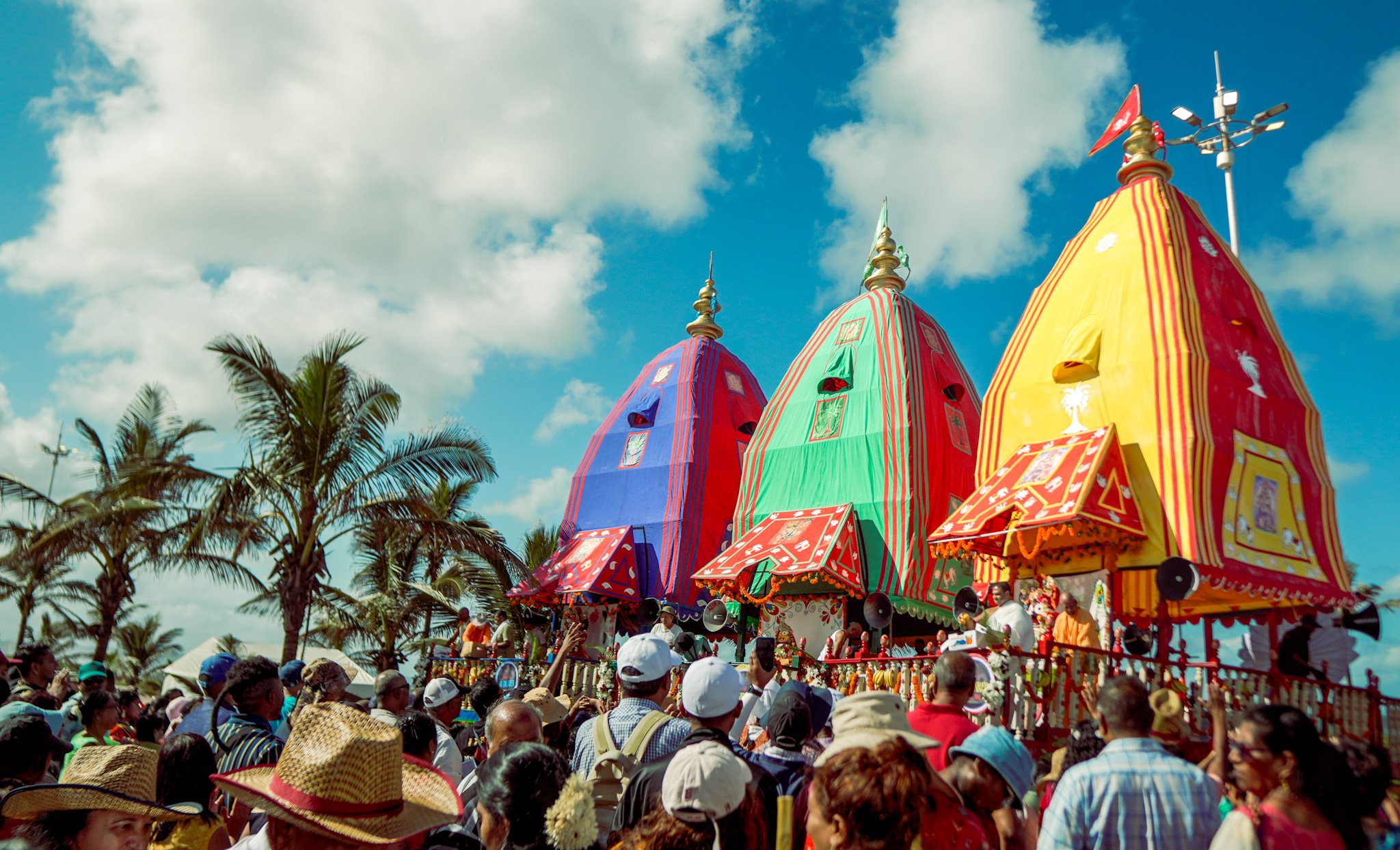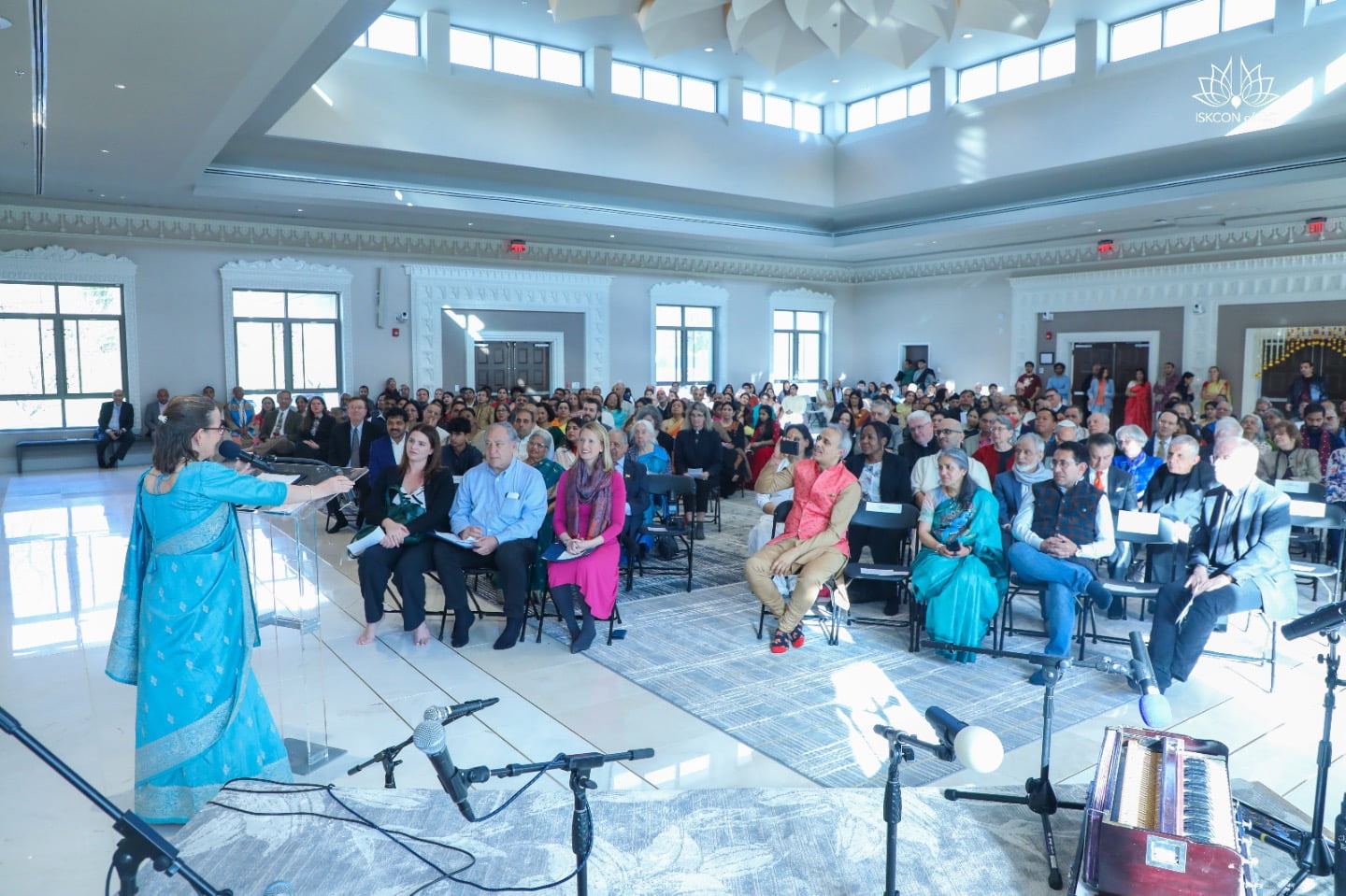ISKCON Moscow Faces Uncertain Future
By Madhava Smullen | Oct 24, 2013

For years, the Moscow Society for Krishna Consciousness has endured broken promises by the Moscow City government, which has repeatedly given them land and buildings, only to evict them later.
Today, with most of their center demolished, an already passed deadline from the courts to leave the premises, and no replacement temple ready, the future of ISKCON Moscow is uncertain.
But Russian devotees are known for never giving up. And there is still some hope.
To understand the situation fully, we must first go back in history. The trials of ISKCON Russia, as we all know, began in Soviet USSR, where devotees were imprisoned and tortured for their beliefs throughout the 1980s.

ISKCON Moscow’s temporary temple complex before demolition started
In 1988, the Moscow government finally allowed the Moscow Society for Krishna Consciousness to officially register as a religious organization.
Then in 1991, Moscow City authorities gave devotees an old two-storey building for rent. The building, although conveniently located near the metro station in Begovaya District, was in such bad condition that it had been marked for demolition before being handed over to ISKCON.
“We used it for fourteen years as the official Hare Krishna temple in Moscow,” says Moscow temple project manager Shyam Das. “Many projects were started there, and book distribution marathons were conducted from there. At that time, people were very eager for spirituality. It was a good start for our preaching.”

A devotee removes belongings from the site – and still finds a way to smile
In 2004, however, the Moscow City government decided that they wanted to demolish the temple and build a new apartment complex in its place. When the devotees were told that they had to move out, they asked for another property to rent.
Claiming that there were no vacant buildings in Moscow, the government instead offered ISKCON a piece of land on which to construct a temple.
According to Russian law, Shyam Das explains, land should be given by the government to officially registered religious organizations for free. So the required paperwork was completed, and this was done.
The negotiations were helped along with the assistance of the Indian government, which was involved from the very beginning.
“Our Russian government knows the importance of the Hare Krishna temple in Moscow for Indians, and the Indian government,” Shyam explains.

Removing belongings
Devotees moved to the new piece of land, located in Dinamo, another convenient location. Meanwhile, their old temple was demolished.
Living in temporary buildings, they began work on a design to build a permanent temple.
“But Christian Orthodox fanatics found out about this, and started a big opposition campaign, with protests in the center of Moscow,” Shyam Das says. “Feeling the pressure, the city authorities took the land back.”
The devotees were allowed to remain in Dinamo temporarily even though the land had been withdrawn, but were told they would have to move out soon.
“We went to court, but of course we lost,” says Shyam. “So we started a campaign, and collected 50,000 signatures from citizens to protect the Moscow Krishna temple.”

Demolishing the Dinamo property
ISKCON also received help from the top level of the Indian government, with the Prime Minister meeting President Vladimir Putin. Finally, in 2006, Delhi Chief Minister Sheila Dikshit met with Moscow Mayor Yuri Luzhkov, who signed a paper agreeing that the Russian government would take the required steps to provide yet another piece of land to ISKCON for the construction of a new temple.
After being offered a series of completely unfit pieces of land by the government, devotees agreed in 2007 to a five-acre plot of land outside Moscow, on the Novoskhodnenskoye Highway.
The Moscow Society for Krishna Consciousness began to wade through the necessary paperwork and to design a new “Vedic Cultural Center,” a 12,000 square meter, five-storey temple that would blend South Indian classical architecture with modern elements.
Meanwhile, the government agreed that devotees could stay at their temporary “temple” in Dinamo — a 2,000 square foot tent and a few ugly buildings made from construction blocks — until the new temple was constructed.
Even with temporary facilities, and even with their energies taken up with planning the new temple, Moscow devotees made the Dinamo center vastly successful. One to two thousand people attended weekly Sunday Feasts, while on Janmastami, Krishna’s birthday, the place was flooded with 10,000 guests. Clearly, the Moscow Society for Krishna Consciousness was an important religious organization that catered to a substantial community.

The temple complex in Dinamo today, with most of the temporary buildings dismantled
Things seemed to be on an upward trajectory at last. Working for three years, devotees gathered the hundreds of approvals needed from different departments for their major temple construction project in Novoskhodnenskoye. The land contract was signed by Moscow authorities, and later registered.
In 2010, Sergey Sobyanin replaced Yuri Luzhkov as Mayor of Moscow. He was informed about the temple construction project, and agreed to it too.
But then, at the end of 2012, adversity struck again. Suddenly the current government ignored all the previous government’s promises. They told devotees they could not build their temple at Novoskhodnenskoye, which would be used to construct apartments and businesses instead.
They also ordered devotees to vacate their Dinamo property, even though the previous government had promised they could stay there until they had constructed a new temple.
So far, there has been no violence yet, contrary to rumors on Facebook and around ISKCON. But court enforcers did visit the Dinamo temple in July, giving devotees five days to vacate and threatening them with violence if they did not.
“I spoke to them every time they came to the temple,” Shyam says. “And every time, they made strong statements that ‘We don’t care, we will do our job, and if some people are still on the property, we will forcibly kick them out.’”
After hearing these statements, devotees immediately approached human rights organizations and sent letters to the local government. The threats stopped, but letters demanding that they leave the premises continued to arrive. Devotees were given until October 15th, 2013 to demolish their temporary buildings themselves, or the government would have a commercial construction company carry out the demolition at a high cost to the ISKCON Moscow congregation.
In addition, the government made no offer to replace the land they had withdrawn.
So devotees began to dismantle their own Dinamo property. At the same time, they began a major campaign for help, because they could not meet the October 15th deadline, and had nowhere to go once they did finish the demolition.
On Friday October 18th, Shyam Das and other ISKCON Moscow leaders met with Moscow government authorities, along with Russian Human Rights Ombudsman Vladimir Lukin.
“Lukin stated that taking the land back was against our rights as a religious group,” Shyam says. “And the Moscow authorities promised that they will solve the problem, allow us to stay longer at Dinamo, and give us new land again. They said they would at least arrange some building for us to rent. They agreed that if they gave us a place where we could worship, it should be a permanent place, not this coming and going.”
But all this is deja vu for ISKCON Moscow.
“We’ve already spent ten years, and two million dollars investigating, planning, designing and getting approvals for our project, all for nothing,” Shyam says. “And now, all we have again are verbal promises. No papers, and no official orders.”
In the meantime, devotees are working day and night to demolish their Dinamo property so that the city authorities don’t demolish it themselves at a huge cost to ISKCON. The festival tent, offices, and brahmachari ashram are already gone — there’s only one building left, housing the temple room and kitchen. Some fifty brahmacharis have been relocated to a cheap house on the outskirts of Moscow — all the community can afford.
“There’s no water, it’s in very bad condition, and winter is coming,” Shyam says. “It will be very austere.”
Meanwhile, the campaign to save ISKCON Moscow is heating up. On Sunday October 20th, ISKCON devotees staged a huge protest in front of the Russian Embassy in Kolkata, India.
And on Monday October 21st, Indian Prime Minister Manmohan Singh met with Russian President Vladimir Putin at the India-Russia Annual Summit in Moscow, where devotees hope their issue was raised.
The outcome of the meeting is not known yet, although ISKCON News will report as soon as there are further developments.
For now, ISKCON Moscow’s future is still up in the air.
“Everything is insecure here in Moscow,” Shyam says. “We are now going back to court to demand the land back, or at least the money we spent to develop the project. In the future, we will launch an international protest campaign, and ask people to sign some appeals. We think that international support may help the Moscow government to understand the situation properly. But we have not organized this yet. For now, devotees can pray for us, because we understand that Krishna is arranging all these situations, and that He is all merciful.”
Devotees around the world can also donate towards a new property for ISKCON Moscow to rent, a better brahmachari ashram, and a place to store valuables while there is no Moscow temple.
“Also, if we could buy some property in Moscow, it would make the situation much more secure,” Shyam says. “Because otherwise we are dependent on the decisions of the government.”
To donate and help ISKCON Moscow, please click here: http://project.veda.ru/en/participation/bank/












